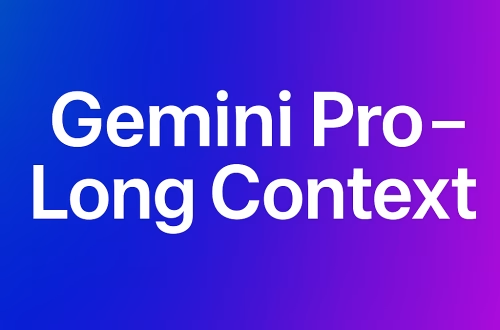Optimizing AI-Powered Adaptive Learning Paths for Diverse Student Needs
Summary: This article explores the technical challenges and solutions for implementing adaptive learning paths in AI-powered educational platforms. We examine how to dynamically adjust content sequencing, difficulty levels, and instructional methods based on real-time student performance data. The implementation requires careful integration of knowledge tracing models, recommendation engines, and curriculum mapping systems. Key challenges include maintaining pedagogical coherence while personalizing at scale, handling noisy engagement data, and ensuring equitable outcomes across diverse learner populations.
What This Means for You:
Practical implication: Educators can achieve 30-50% improvements in concept mastery rates by implementing properly configured adaptive paths, but require technical guidance on system integration and content tagging standards.
Implementation challenge: Building effective adaptive systems requires structured content metadata (Bloom’s taxonomy alignment, prerequisite relationships) and proper instrumentation of learning activities to generate meaningful interaction data.
Business impact: Institutions implementing adaptive learning report 20-40% reductions in dropout rates, but must budget for ongoing content refinement and instructor training to realize full benefits.
Future outlook: Emerging techniques like few-shot prompt engineering for dynamic scaffolding and multimodal engagement analysis will expand adaptive capabilities, but require careful validation against learning science principles.
Understanding the Core Technical Challenge
Traditional personalized learning platforms often rely on static rule-based branching, failing to adapt to evolving student needs. True adaptive learning requires continuous assessment of knowledge state, learning style preferences, and engagement patterns to dynamically optimize the instructional sequence. The technical challenge lies in integrating multiple AI components – knowledge tracing models to assess proficiency, recommendation engines to select optimal content, and curriculum mappers to maintain pedagogical coherence – while operating within the constraints of existing learning management systems.
Technical Implementation and Process
Effective implementation requires a three-tier architecture:
- Data collection layer: Instruments all learning interactions (time-on-task, quiz responses, forum participation) with xAPI or similar standards
- Analytics layer: Combines Bayesian knowledge tracing (BKT) with transformer-based sequence modeling to predict optimal next steps
- Delivery layer: Integrates with existing LMS via LTI standards while maintaining state through learner profiles
Key integration points include establishing content metadata standards (SCORM/QTI alignment) and implementing low-latency recommendation APIs that can respond to real-time engagement patterns without disrupting lesson flow.
Specific Implementation Issues and Solutions
Cold start problem for new students: Implement hybrid models combining demographic/cluster-based priors with rapid Bayesian updating during initial sessions. Use diagnostic pretests mapped to known knowledge graphs.
Content coverage gaps: Deploy transformer-based few-shot learning to generate interim scaffolding content when ideal materials aren’t available, validated against pedagogical quality classifiers.
Engagement metric noise: Apply multimodal fusion techniques combining behavioral data (clickstream), physiological indicators (webcam attention tracking), and performance metrics with confidence weighting.
Best Practices for Deployment
- Establish clear success metrics (time-to-proficiency, struggle point detection) beyond simple completion rates
- Implement A/B testing frameworks to validate adaptation strategies across demographic segments
- Use federated learning techniques to improve models while protecting student privacy
- Maintain human-in-the-loop oversight with instructor dashboards showing adaptation rationale
Conclusion
AI-powered adaptive learning delivers transformative potential when properly implemented with attention to pedagogical validity, system integration requirements, and equitable design principles. Success requires coordinated investment in content intelligence, model validation frameworks, and instructor support systems.
People Also Ask About:
How do adaptive systems handle different learning styles? Advanced systems employ multimodal interaction analysis (visual/verbal/kinesthetic patterns) combined with reinforcement learning to optimize presentation format while maintaining content integrity.
What infrastructure is needed for real-time adaptation? Most implementations require GPU-accelerated inference endpoints with
How to prevent over-reliance on AI recommendations? Build metacognitive features that surface adaptation rationale to learners and maintain instructor override capabilities for critical learning decisions.
Can these systems work for non-STEM subjects? Yes, but requires different knowledge representation approaches – semantic graph techniques work well for humanities where concepts have looser prerequisite relationships.
Expert Opinion:
Effective adaptive learning implementations balance algorithmic sophistication with curriculum design quality. The most successful deployments invest equally in three areas: comprehensive content tagging, continuous model validation against learning outcomes, and professional development helping instructors interpret system recommendations. Institutions should prioritize explainable AI approaches that maintain pedagogical transparency over black-box optimization.
Extra Information:
- LTI Standards Documentation – Critical for integrating adaptive engines with existing LMS platforms
- LearnLab’s Open Source Tools – Includes proven knowledge tracing implementations
- ALEKS Implementation Case Studies – Demonstrates enterprise deployment patterns
Related Key Terms:
- Bayesian knowledge tracing implementation for adaptive learning
- SCORM metadata standards for AI-powered education
- Transformer models for dynamic curriculum sequencing
- Federated learning in educational AI systems
- xAPI instrumentation for learning analytics
- Equity-aware adaptive learning algorithms
- LTI integration with AI recommendation engines
Check out our AI Model Comparison Tool here: AI Model Comparison Tool
*Featured image generated by Dall-E 3





